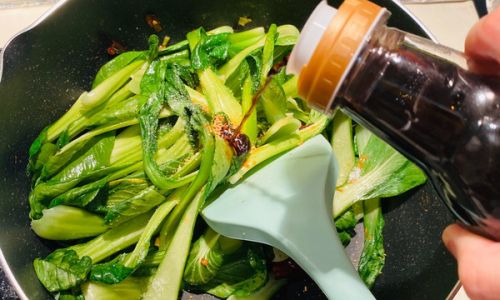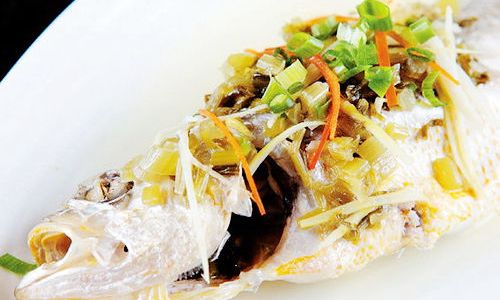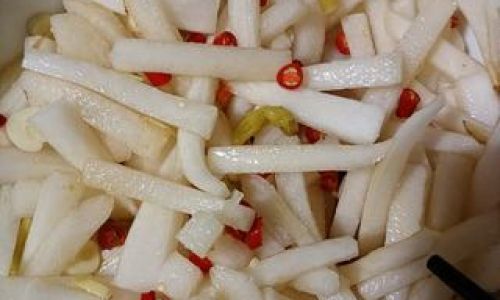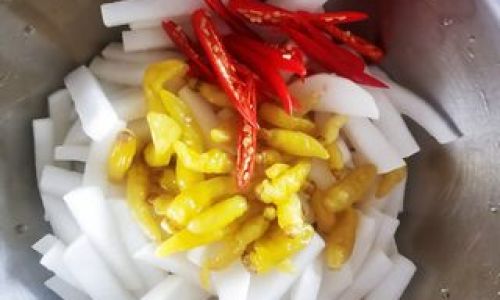Introduction
In the vast culinary landscape of Chinese cuisine, stir-frying stands as a cornerstone technique, celebrated for its ability to preserve the freshness, color, and nutrients of ingredients while infusing them with bold flavors. Among the myriad of vegetables that benefit from this cooking method, Chinese rapeseed greens, commonly known as bok choy or Chinese cabbage in some regions, hold a special place. Their crisp texture, mild sweetness, and nutrient-rich profile make them an ideal candidate for a quick and delicious stir-fry. This guide aims to empower you with the knowledge and skills necessary to create a stir-fried Chinese rapeseed greens dish that is not only visually appealing but also bursting with flavor.
Understanding Chinese Rapeseed Greens

Before diving into the stir-frying process, it’s crucial to understand the unique characteristics of Chinese rapeseed greens. These greens are characterized by their long, stalk-like stems and broad, dark green leaves. The stalks are typically thicker and more fibrous than those of other leafy vegetables, while the leaves are tender and slightly sweet. This combination of textures and flavors presents both challenges and opportunities for the cook. Proper preparation and cooking techniques are essential to balance these elements and achieve a harmonious dish.
Selecting the Best Rapeseed Greens
The first step in creating a delicious stir-fry begins with selecting high-quality rapeseed greens. Look for bunches that are fresh, vibrant green in color, and free from yellowing or wilting leaves. The stalks should be firm and not overly bendy, indicating freshness and a lack of moisture loss. Avoid bunches that have been sitting in water or show signs of bruising, as these can lead to a soggy or bitter final dish.
Preparation Techniques
-
Washing: Rinse the rapeseed greens thoroughly under cold running water to remove any dirt or pesticides. Pat them dry using a clean kitchen towel or paper towels. Excess water can cause the greens to steam rather than stir-fry, resulting in a less crisp texture.
-
Trimming: Cut off the bottom inch of the stems, where they often become tough and fibrous. Separate the leaves from the stalks. The stalks can be sliced into thin pieces to ensure they cook evenly with the leaves.
-
Seasoning and Marinades: While stir-fries are known for their simplicity, a well-seasoned marinade can elevate the dish to new heights. Consider a blend of soy sauce, rice vinegar, sesame oil, garlic, and ginger to create a base flavor profile. Lightly coat the separated stalks and leaves with this marinade, allowing them to sit for at least 10 minutes to absorb the flavors.
The Stir-Frying Process

Stir-frying is a high-heat, fast-paced cooking method that requires precision and attention to detail. Here’s a step-by-step guide to achieving perfect stir-fried Chinese rapeseed greens:
-
Heating the Pan: Use a wok or a large, flat-bottomed skillet with a well-fitted lid. Preheat the pan over high heat until it’s very hot. A drop of water should sizzle and evaporate immediately upon contact with the pan.
-
Adding Oil: Pour in a small amount of oil—vegetable, peanut, or sesame oil are all suitable choices. Swirl the oil around the pan to coat it evenly. The oil should be hot but not smoking before adding the ingredients.
-
Aromatics: Add your aromatics first—minced garlic, sliced ginger, and/or chopped scallions. Stir-fry these for about 30 seconds until fragrant but not burnt. This step is crucial as it sets the foundational flavor of the dish.
-
Stalks First: Add the sliced stalks to the pan, spreading them out in a single layer. Stir-fry for about 2-3 minutes, stirring occasionally, until they begin to soften and turn a brighter green. This ensures they cook through without becoming mushy.
-
Leaves Follow: Add the leaves to the pan, spreading them out evenly. Stir-fry for another 2-3 minutes, stirring constantly to prevent burning. The leaves should wilt and turn a vibrant green, but still retain some crispness.
-
Sauce Addition: If you’re using a sauce or marinade that wasn’t previously absorbed by the greens, pour it around the edges of the pan rather than directly over the greens. This allows the heat of the pan to cook and thicken the sauce slightly before it combines with the greens. Stir well to coat all pieces evenly.
-
Taste Adjustment: Taste the greens and adjust the seasoning as needed. A pinch of salt, a dash of soy sauce, or a squeeze of lime juice can make all the difference.

-
Final Touches: Remove the pan from heat just before the greens reach your desired level of doneness. Residual heat will continue to cook the greens slightly. Optionally, garnish with sesame seeds, chopped green onions, or a drizzle of chili oil for added flavor and texture.
Serving and Enjoying
Stir-fried Chinese rapeseed greens are best served immediately while they are still hot and crisp. They pair wonderfully with a variety of dishes, from steamed rice and noodles to grilled meats and seafood. Consider serving them as a side dish to complement a larger meal or as a light, healthy main course accompanied by a simple protein like tofu or scrambled eggs.
Storage and Leftovers
While stir-fried greens are best enjoyed fresh, leftovers can be stored in an airtight container in the refrigerator for up to 2 days. Reheat them gently, either in a microwave or on the stovetop, to avoid overcooking and maintaining their delicate texture.
Conclusion
Mastering the art of stir-frying Chinese rapeseed greens is a rewarding culinary endeavor that not only enhances your cooking skills but also introduces you to the delicate balance of flavors and textures that define Chinese cuisine. By following the steps outlined in this guide—from selecting the freshest greens to perfecting the stir-frying technique—you’ll be able to create a dish that is not only visually stunning but also bursting with the fresh, vibrant flavors that make stir-fries so beloved. Happy cooking!





0 comments